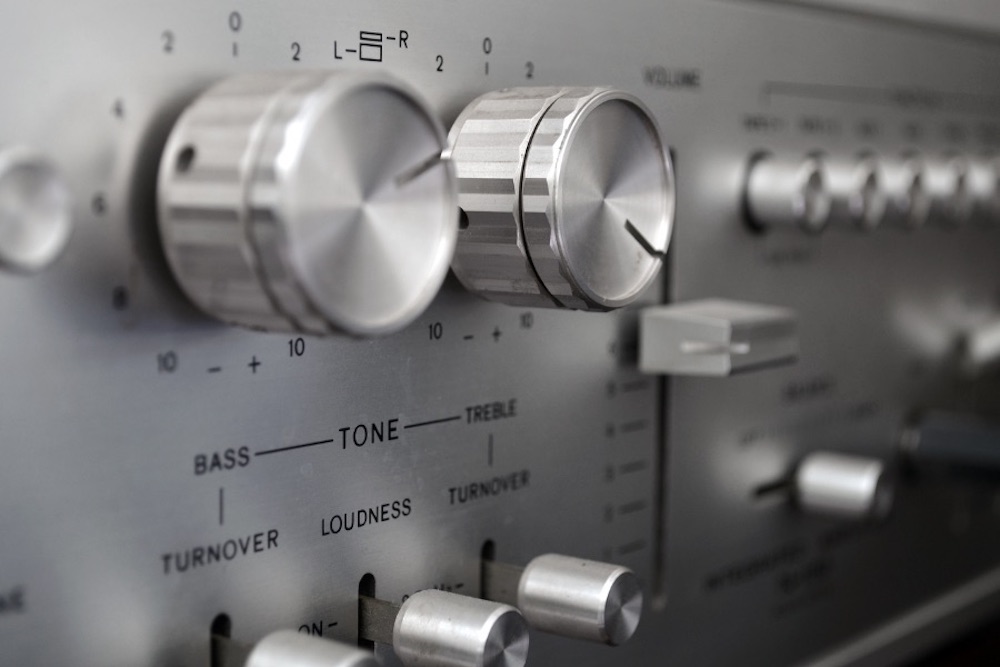
Improve the Sound Quality in Your Home with These Simple Steps
If you suffer from tinnitus or are currently in the process of tinnitus treatment, you may think that purchasing a top-of-the-line stereo system or setting up a pricey theater system is all you need to do to set the course for high-end sound quality in your home. While state-of-the-art equipment can make an impact, you may be disappointed when you crank up your music or a movie and find it wasn’t quite what you anticipated.
This is likely more the result of the room setup than any fault in the equipment itself. Even if you cannot afford the best technology, there are steps you can take to enhance what you have. Whether you want to enjoy forms of entertainment, improve reception on the phone and video calls while working remotely, want better sound while playing or recording music, or something else, there are a few simple tricks that can make all the difference.

Choose the Best Room
You may not have a choice, especially if your listening space is limited to a single bedroom or you need a larger area like the living room for family entertainment. However, if you have a selection, try to find one that is not symmetrical (the same on both sides if there is a line down the middle). These rooms cause a lot of sound reflection, which can build up and cause unwanted distortion.
Rooms with uneven sides make it easy to disperse sound, and if you find one that is more rectangular, that can help with projection if you place your sound source near the end of a shorter wall.
Keep in mind that the shape of the room is just a starting place, and you can find ways to improve whatever area you have available for your listening pleasure.
Solve the Window Problem
Most rooms will have windows, which is excellent if it’s stuffy inside and you want some fresh air. However, they can pose a problem in influencing sound quality. They reflect some sound frequencies while transmitting others through to the other side. This can affect your sound and invite the risk of outside sounds entering your space, tainting your enjoyment.
The best solution is to eliminate the window, but as that is generally not feasible, there is another quick fix. Find some thick, sound-absorbing curtains or drapes for the window which cover the entire glass surface. This is a small step but can pay dividends regarding sound quality.

Wall, Room, and Floor Furnishings
For the attentive sound room, you will handle your walls and room decor differently regarding what kind of furnishings you maintain. For the walls, try to remove picture frames or other hard surfaces because these enhance reflection and may also vibrate, disturbing your audio experience. The goal is not to eliminate all sound or even reflection; you do not want to completely deaden the room and prevent the most significant reverberations from bouncing around. The solution is generally soft surfaces.
This philosophy carries into how you arrange your room as well. You want furnishings around your room and against the walls, but only those with soft surfaces. Cushioned sofas, couches, chairs, and other accessories can reduce sound reflection while offering comfortable places to sit.
As to the floor, you can probably guess that a hard surface will prove a detriment to your sound, so soft carpets are best. If you cannot replace a hardwood floor with carpet, you can place rugs to improve the acoustics.
Acoustic Paneling
Even though the walls may now be devoid of hard reflective accessories, the wall itself is still a reflective source. You can considerably improve your audio if you acquire acoustic paneling and cover your entire wall. If you can’t afford a complete panel overhaul, get what you can and space them evenly along the wall. Every little bit helps!
You can purchase retail or professional acoustic paneling or choose less expensive alternatives. Felt tiles, for example, can serve as attractive wall decor while providing sound dampening. You could also hang some blankets, tapestries, fabric, foam, or other types of soft material there to improve your situation.
Full bookshelves can also be a suitable sound dampener, especially along the back wall. Not only are they attractive, but the books will dampen sound reflection.

Dealing with Corners
Bare corners can cause a problem, setting what is often referred to as a “bass trap,” as lower frequencies tend to build up in these areas. Try to put furniture in corners to prevent this issue when you can, even if it’s a lamp or a beanbag. The worst areas are where two walls meet a floor or a ceiling, as there are three surfaces to reflect, so do your best to block off the tops and bottoms of corners if you can.
If you do not have a good option, you can buy retail bass traps specially designed to fit snugly in corners.
Speaker Placement
Now that you have your room dampened appropriately, it is time to optimize your speaker placement and listener position for the best results. You want to avoid placing your speakers against walls, so keep them a few feet away. If you have a central speaker, such as for an entertainment system, you will want it near your viewing surface, centered below the screen.
For other speakers, you want them spaced around where the listener(s) will sit, angled toward that spot directed just to where a person’s head will rest when seated. This creates a triangle of sound homing in on the audience. For additional surround, sound speakers, place them behind the listener, elevated at a height just above the estimated head level.
The Bottom Line
Proper room care and speaker placement can heighten a mediocre listening experience to whole new levels. Blocking sound entry and exit points such as windows and keeping soft furniture within the room are great starting points, as well as removing hard surfaces from walls in favor of soft fabric or acoustic paneling. With a bit of care and attention to detail, you can improve the sound quality in your home without breaking the bank!







